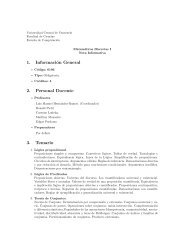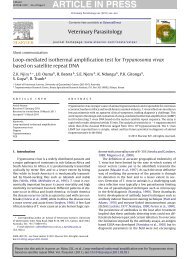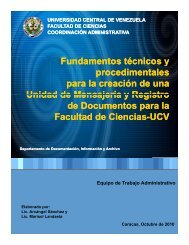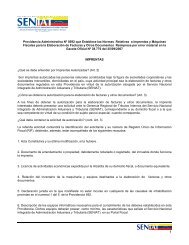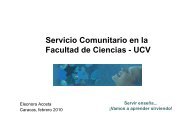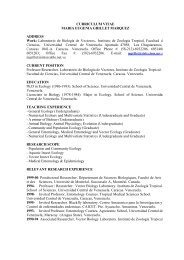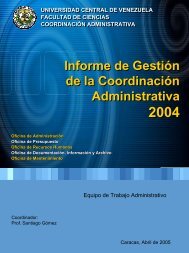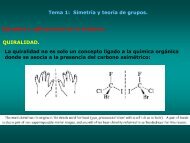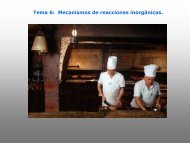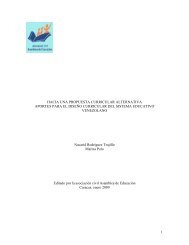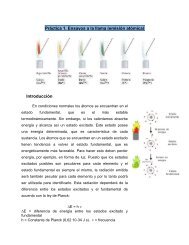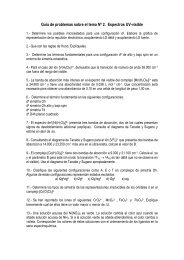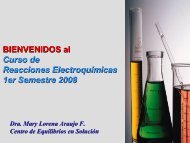Collecting and Preserving
Collecting and Preserving
Collecting and Preserving
- No tags were found...
You also want an ePaper? Increase the reach of your titles
YUMPU automatically turns print PDFs into web optimized ePapers that Google loves.
the insects, using nets, aspirators, beating sheets, orwhatever apparatus suits his or her particular needs. In thesecond, the collector participates passively <strong>and</strong> permitstraps to do the work. Both approaches may be usedsimultaneously, <strong>and</strong> both are discussed in the followingpages. Using a variety of collecting methods will help tomaximize the number of specimens taken, especially whenbriefly visiting an interesting area.While picking up insects by h<strong>and</strong> is simple <strong>and</strong>sometimes effective, their size, mobility, <strong>and</strong> the possibilityof being bitten or stung usually dictates that variouskinds of equipment <strong>and</strong> special methods are needed. Thosedescribed here have general application; it is expected thatthe collector will make some adaptations to fit his or herown purposes <strong>and</strong> resources. In fact, as experiencecollecing increases, or the target group becomes morefocussed, the use of specialized techniques increases. Foradditional information, especially concerning the use ofspecialized techniques, consult the list of references.Techniques <strong>and</strong> Toolsvirtually impossible to extricate without damage.(5) Small envelopes for temporary storage of delicatespecimens <strong>and</strong>/or gelcaps for tiny specimens.(6) One or more aspirators (see p. 7-8).(7) Absorbent tissue for use in killing bottles <strong>and</strong> aspirators.(8) Notebook <strong>and</strong> writing equipment for jotting downnotes <strong>and</strong> label data.(9) A strong knife for opening galls, seed pods, twigs, etc<strong>and</strong> a pair of scissors for cutting labels.(10) A small, fine brush (camel’s hair is best) for pickingup minute specimens. Moisten the tip; tiny specimenswill adhere to it <strong>and</strong> may be transferred to a killingbottle or vial.References (general): Arnett, 1985; Balogh 1958;Banks 1909; Banks et al. 1981; Bl<strong>and</strong> & Jacques 1978;Borror et al.; British Museum 1974; Cantrall 1939-40;Cantrall 1941; Chu 1949; Edmunds & McCafferty 1978;Foote 1948; Klots 1932; Knudsen 1966; Knudsen 1972;Kogan & Herzog 1980; Lehker & Deay 1969; Lincoln &Sheals 1979; McNutt 1976; Martin 1977; Nicholls 1970;Norris 1966; Oldroyd 1958; Peterson 1964; Service 1976;Southwood 1979; Stein 1976; Upton, 1991; USDA 1970;USDA 1966-70; Urquhart 1965; Wagstaffe & Fidler 1955.The equipment used to assemble a general insect ormite collection need not be elaborate or expensive. Inmany instances, a collecting net (see below) <strong>and</strong> severalkilling bottles (see p. 5) will suffice; however, additionalitems will permit more effective sampling of a particularfauna. Many collectors carry a bag (fig. 1) or wear a vestin which they store equipment. The following itemsusually are included in the general collector’s bag:(1) Forceps. Fine, lightweight forceps are recommended; ifsharp-pointed forceps are used, care must be taken notto puncture specimens. If possible, grasp specimenswith the part of the forceps slightly behind the points.(2) Vials containing alcohol or other preservatives (see p.21).(3) Killing bottles of various sizes.(4) Small boxes or containers for storing specimens aftertheir removal from killing bottles. These may be madeof cardboard, plastic, or metal <strong>and</strong> should be partlyfilled with soft tissue or cloth to keep specimens fromrolling about. Do not use cotton because specimensbecome entangled in the fibers <strong>and</strong> may become(11) Bags for storing plant material, rearing material, orBerlese samples. For collecting much plant material, abotanist’s vasculum or tin box is advisable.(12) A h<strong>and</strong> lens.This list may be modified according to the specialkinds of insects or mites to be collected. A small diggingtool or trowel may be useful for collecting insects fromsoil or for gathering Berlese samples <strong>and</strong> a heavy knife orsmall hatchet for searching under bark or in decaying logs.A plant press should be available to prepare plant specimensfor determination or as voucher specimens, especiallywhen leaf-mining insects are being studied. Whencollecting at night, have a flashlight or headlamp; the latteris especially useful because it leaves the h<strong>and</strong>s free.Much of the equipment listed above may be obtainedfrom around the home or from ordinary sources like a drugstore, but equipment especially designed for insectcollecting often must be bought from special supplyhouses. If there is a local company, their address mayusually be found in the yellow pages of telephone directoriesunder “Biological Laboratory Supplies” or “LaboratoryEquipment <strong>and</strong> Supplies.” The faculty members of alocal university’s biology or entomology department orcurators at a nearby museum are usually willing to help<strong>and</strong> in the best position to recommend a supplier in thearea. Professional journals also sometimes carry advertisementsfor equipment suppliers.1.2 <strong>Collecting</strong> Nets<strong>Collecting</strong> nets come in three basic forms: Aerial,sweeping, <strong>and</strong> aquatic. The first is designed especially for5



